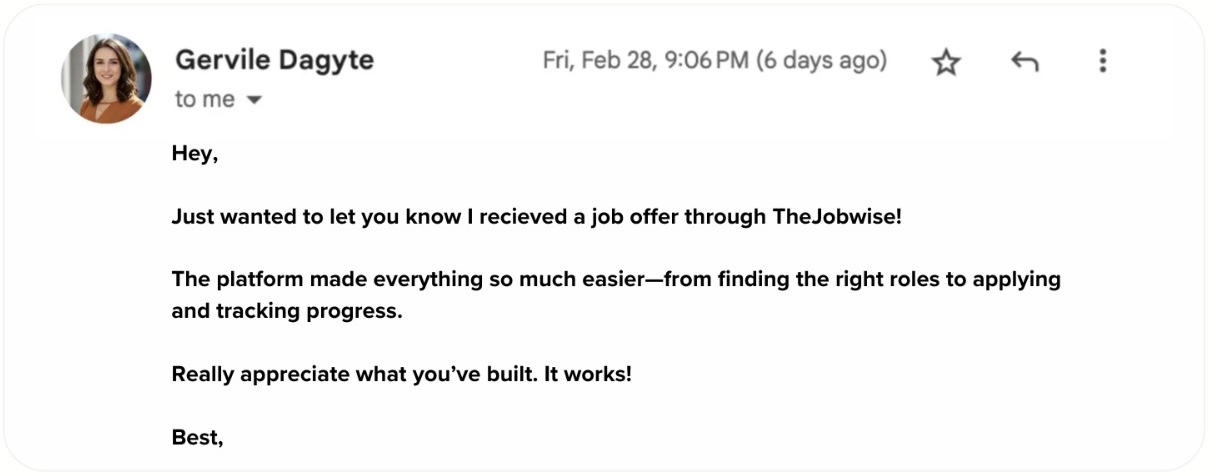Your Next Role Starts Here.
Connecting you to opportunities that match your skills, passion, and goals.

Free for the first 10 days, No commitments, cancel anytime.
Connecting you to opportunities that match your skills, passion, and goals.

Our Mission
We use AI to help you land your dream job faster and smarter.
4.7/5
Trusted by 10,000+ happy jobseekers

Our AI tailors your resume and cover letter to highlight skills desired by employers, boosting your candidacy for every application.

Choose your preferred subscription
At TheJobWise.com, we are revolutionizing the way you apply for jobs. Our cutting-edge platform leverages advanced AI tools to streamline and enhance your job search experience. Say goodbye to the tedious task of applying for multiple positions manually—our AI-powered technology ensures your applications are optimized, tailored, and submitted efficiently.
